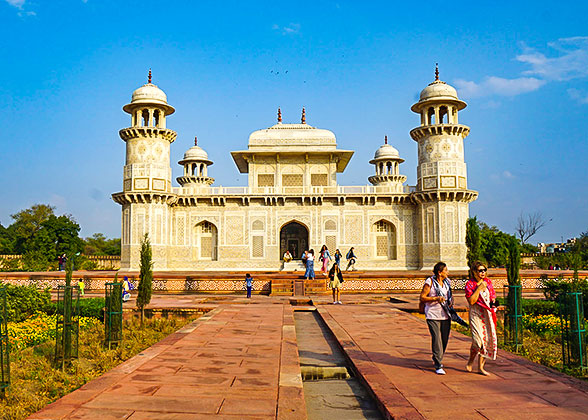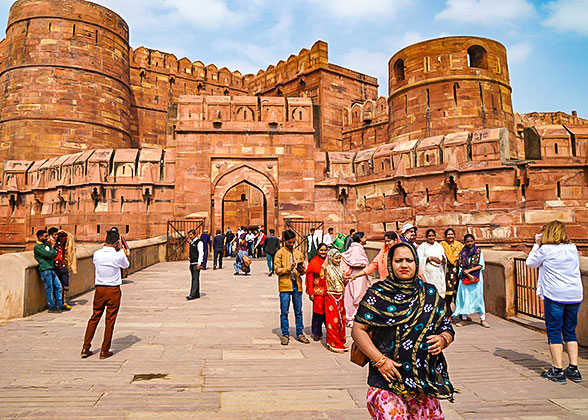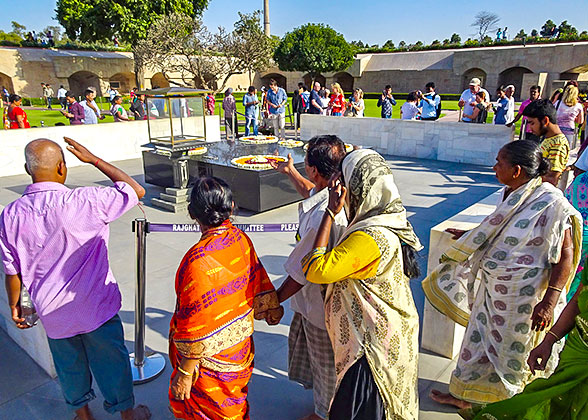Yamuna River, India: 10 Fascinating Facts about the Sacred River
Yamuna River is the largest tributary river in India, the second-largest tributary river of the Ganga river basin. The Yamuna originates from the Yamunotri Glacier at a height of 20955 feet, located at Bandarpunch, which is the peak of lower Himalayas in Uttarakhand. The Yamuna River merges with the Ganga River at Triveni Sangam in Prayagraj, a sacred place for Hindus. Triveni Sangam is the place where the famous Hindu festival Kumbh Mela is held every 12 years.The name Yamuna is derived from the Indian language Sanskrit, which means twins. There is a mention of the river Yamuna in Hindu religious scriptures Rig Veda and the Atharva Veda. The Yamuna River also has a connection with the birth of Hindu god Krishna who dictated the holy Bhagavad Gita to Arjun during the battle of Kurukshetra.
Here are some of the interesting facts about the river Yamuna.
1. Yamuna and Shree Krishna
The Yamuna is the river on which Vasudeva, the father of Krishna, had carried just born baby Krishna in a basket from Mathura to Gokul and handed him over to Krishna’s foster father Nandaraj, on a rainy night. Vasudeva had to hand over baby Krishna to Nandaraj due to certain circumstances. Shree Krishna is the eighth avatar of Lord Vishnu. Yamuna River was poisonous during those times of Krishna’s childhood, as there was a five-head snake named Kaliya living under the Yamuna River, who didn’t want humans to consume the Yamuna water. Shree Krishna in his childhood had jumped into the poisonous rivers, fought with the Kaliya snake and won the battle. Krishna later placed a condition to clear up all the poison, which was accepted, hence from then, Yamuna became suitable for drinking.2. Lord Hanuman and Yamuna’s Birth
The Yamuna, which originates from Bandarpunchin Uttarakhand, was a snowy glacier during the Ramayana period. Lord Hanuman, the Vaanar (Semi-ape, semi-main) god’s tail was set afire in Lanka by Ravana, as a result of which Lord Hanuman burnt the palace of Ravana with his tail. To cool down his burnt tail, he went to the peak of lower Himalayas and buried his tail in the snow to cool down the burning sensation. The snow at the place where he had laid his tail started melting and gave birth to the river Yamuna. Hence the place is known as Bandarpunch (ape’s tail). The ashes of Hanuman’s tail made the Yamuna water dark.3. Sacred River
The Yamuna is a sacred river for Hindus, considering the fact that Lord Hanuman gave birth to the river. The river Yamuna has a huge significance in Hindu scriptures like Ramayana, Mahabharata, etc. due to which the river is still worshipped by Hindus. The river plays an important role in the Kumbh Mela, which happens in Prayagraj every 12 years. There are aartis (a religious ritual) and poojas done at the banks of the Yamuna river. People also take a dip in the river, as it is believed the river is divine.4. Hot water
The Yamuna River has a hot water pool at the Yamunotri. The pool is also known as Surya Kund. The pool is believed to be dedicated to the offspring of the Sun god Surya. The water is so hot at the Surya Kund that people also prepare tea, rice, and boil potatoes using the water. The temperature of the water at the Surya Kund is estimated to be around 88 degrees Celsius. The rice and potatoes prepared at the Surya Kund are offered to the deity in Yamunotri Temple.5. Yamuna Pollution
The Yamuna River originates from a glacier in Uttarakhand. From Uttarakhand, the river flows to Haryana, Delhi, and Uttar Pradesh. It is recorded that the river is pure in the birthplace, gets polluted as it reaches the Delhi-NCR region. In 1984, the Government of India started a mission to clean the Yamuna, but couldn’t succeed in stopping the abuse of the sacred river Yamuna. Industrialization in Delhi-NCR and throwing industrial wastes into the river has been the major cause of pollution.6. Yamuna and Taj Mahal
One of the Seven Wonders of the World, the Taj Mahal is located at the southern banks of the Yamuna River. The Taj Mahal was built at the southern banks to enhance the beauty of the monument. Many pictures of the Taj Mahal have been taken along with the Yamuna River, and it is one of the most favourite spots for clicking pictures in the evening time. The builder of the Taj Mahal found this spot to be the most fascinating one to build the white marble monument.7. Bhagavad Gita on the Yamuna
Bhagavad Gita is dictated by Shree Krishna to Arjuna and written by Vedavyasa in Bhishma Parva of the Mahabharata. Shree Krishna in Bhagavad Gita says devotees who regularly take bath in the Yamuna River, cleanse themselves from all the contamination of the materialistic world. It is also mentioned that Shree Krishna and his friends, in their childhood, used to take a bath in the holy river Yamuna.8. Economic Significance
The Yamuna River plays an important role in farming and agriculture in the states of Haryana, Uttar Pradesh, Uttarakhand, and other states. The water of the Yamuna River is used for irrigation purposes of the farming lands present in various North Indian states. Also, the Yamuna River supplies pure and drinking water to many of the North Indian states. Yamuna’s water was used for farming in the Indo-Gangetic plains even in ancient India, during the Vedic period. There are several canals built for the supply of the Yamuna water in various states in India.9. Yamuna Conservation Zone
In 2014, the 52km (32mi) stretch of the Yamuna River from Delhi to Uttar Pradesh was declared as a conservative zone by the National Green Tribunal Act, under the Yamuna Action Plan. The move is intended to clean the pollution of the Yamuna River in the 52km stretch, where the river is polluted. Here, bathing, throwing industrial wastes, etc. are abolished, as they cause pollution of the water. In 2017 the High Court of Uttarakhand ordered to grant the Yamuna River with the status of the legal entity.10. Yamuna River Barrages
The Yamuna River has a total of six barrages that are functional from north-west to south-east. Dakpathar Barrage is managed by the Uttarakhand government. The other five barrages, HathniKund Barrage in Haryana, Wazirabad, ITO, Okhla Barrages in Delhi, and Gokul Barrages in Uttar Pradesh are managed by the respective governments.




